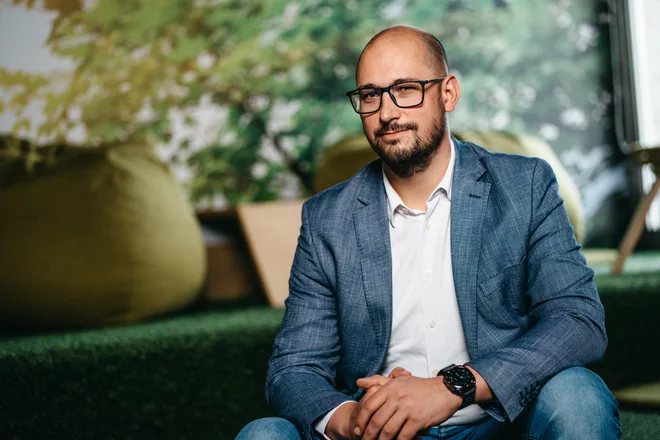The fight against HIV can be lost when the United States pulls out

It looked so promising. In 2024, two groundbreaking studies came about a new drug for HIV/AIDS. The discovery was so revolutionary that the drug, Lenakapavir, was named the 2024 breakthrough of the magazine Science, which describes it as « a crucial step towards reducing HIV/AIDS as a global health crisis. » The company, Gilead, which has researched the drug has offered the world’s 130 poorest countries to license it at cost price. But the question is whether it will ever be used where it is needed best.
In 1981, the first scary reports from the United States came about young gay men who died in an unknown illness. It was the prelude to a terrible epidemic that quickly spread in the gay world. In 1982, the first person with AIDS was diagnosed in Sweden. When new tests came, it turned out that many were infected long before they got sick. Once sick, the process was quickly and inexorably.
As early as 1984 identified French and American scientists The HIV (human immune deficiency virus) as the cause of the disease. It was found that the spread of infection took place from human to person, in sexual contact. Once the researchers had identified the HIV virus and were able to set up tests for diagnosis and infection tracking, it was quickly found that HIV and AIDS had been around for a long time, and had its origins in Saharan Africa, where the spread was already extensive. The researchers managed to identify the genetic sequence of HIV-1, the tribe of the virus that is currently found throughout the world, and found the virus in two samples taken from two patients, a woman and one man, in Congo in 1959 and 1960. The dissemination of the virus. By the 1960s, the virus had already spread considerably in Central and East Africa and then spread quickly outside the African continent.
Many had not come out as homosexuals, and when they died, nothing was in the obituary. Often they were buried in solitude
In the research world, the understanding of this new disease was sensational. But the fact that it was precisely gay men who were affected meant that the interest of politicians, authorities and media was lukewarm. President Reagan was well informed, but did not take the word AIDS in his mouth. The frustration and horror of the victims was great. Many had not come out as homosexuals, and when they died, nothing was in the obituary. Often they were buried in solitude. But as the requirements for action increased, action groups were formed that received more and more attention. When famous people died in AIDS, and people turned out to know someone with the disease, it was no longer possible to duck. When it turned out that other groups such as hemorrhagic disease were also affected and that the infection spread even heterosexually, the disease became a matter for more and more people.
In 1995, AIDS was the main cause of death in the United States for men between the ages of 25 and 44, but with the discovery of new drugs the image was changed. The first drugs produced severe side effects, and the virus quickly learned to make them ineffective. But by combining three different drugs, all of which attack the virus in different ways, researchers managed to develop an effective treatment method. In 1996, it was shown that powerful combinations of drugs could completely suppress HIV and prevent the development of AIDS. Today’s antiviral drugs are even better and allow millions of people to live normal lives. Treated people whose viruses are suppressed also rarely infect others – a discovery that caused the magazine Science to appoint it for this year’s breakthrough in 2011.
From a positive HIV test being a death sentence, one can now live with the right combination therapy a normal life, with a chronic but manageable illness.
Yet AIDS was shortly after The turn of the millennium The leading cause of death for people aged 15-59, mainly because the drugs had not reached the poorer countries. By 2023, deaths in AIDS had decreased to the lowest level since the top listing in 2004, partly thanks to the increasing number of people receiving antiretroviral treatment. At the end of 2023, 31 million people were on antiviral treatment globally, about 77 percent of all living with HIV. While HIV/AIDS pandemic was the main cause of death on the African continent in 2002, the number who died as a result of HIV/AIDS had more than halved 20 years later. The number of new infected people is also declining. About 660,000 were infected with HIV in Africa south of the Sahara in 2022, compared with over 3 million newly infected in 2002.
It is the drugs that have made it possible to fight the disease on several fronts. Partly by treating those who are infected so that they no longer infect others. An important path of infection is from mother to child, especially during childbirth, but also during the breastfeeding period. Swedish researchers have shown that the risk of being infected can be greatly reduced if the mother and the newborn child receive a short cure with relatively inexpensive antiviral drugs in connection with childbirth. It has also been shown that treatment of either the child or the mother with antivirus drugs during the breastfeeding period protected the child so that the total risk of infection decreased to any scarce percent, compared with up to 40 percent without treatment.
Today, the goal is for all women living with HIV to stand on lifelong treatment, and they should not pass the virus to the children. Another goal is to prevent infection in the most vulnerable. Current drugs given every day are very effective. But it is not necessarily so in real life. People don’t always take their pills. In a study in South Africa, women stated that they felt that there was a stigma around the pill – a sex partner could assume that they took it because they already have HIV or because they have other partners. Here Lenakapavir comes in. The big point of Lenakapavir is that it can be given via an injection twice a year. It is a dramatic new alternative to having to take a pill every day.
Instead, we now see the risk of losing many years of work and millions of dead as a result of what is now happening in the United States
But despite these progress Still living over 9 million people with HIV without receiving treatment, almost half of them in Saharan Africa. It would be necessary to continue great efforts to achieve the goal of eradicating HIV/AIDS by 2030. Instead, we now see the risk of losing many years of work and millions of dead as a result of what is now happening in the United States.
The United States took the lead early to fight HIV/AIDS, both with assistance, to track and treat the disease, and with research to develop the tools needed to fight the disease. In 2003 when Georg Busch the elderly was president he initiated a special program, Pepfar, President’s Emergency Plan for AIDS Relieffor treatment, prevention and research on HIV/AIDS, the largest health program ever for an individual disease. The United States has since accounted for much of the fight against HIV/AIDS in poor countries, especially in Saharan Africa.
With a horrifying speed, that work is now being ruined, and it is difficult to overlook the effects. New messages come almost daily. USAID, the US’s aid organization, is closed down, as well as Pepfar, although there is information that any business will be saved.
In a recent study in The Lancet, the researchers warn that reduced financing of the HIV work can have disastrous consequences. In the study, they show that if the support from Pepfar disappears completely, we can until 2030 see up to 2.9 million more deaths and over 10 million new HIV cases-figures we have not seen since the early 2000s. UNAIDS, which is the UN’s total program against HIV/AIDS, has predicted that if Pepfar is closed down for good, we can see another 9 million new HIV cases and more than 6 million AIDS-related deaths until 2029.
What can the rest of the world do? The United States has been by far the largest donor, and accounts for more than 70 percent of HIV control globally, so it will be difficult if not impossible to compensate. For other countries, including Sweden, has already reduced their aid. The United Kingdom, Germany, France and the Netherlands have accounted for another 20 percent of international support to fight HIV. And they have all started to cut down. The Lancet article estimates that if their international support decreases by 24 percent, it can already be infected within two years to infect another 4.4 million people, and 2.9 million more people to die. These are incredible numbers. And the effects are already visible.
Already, thousands of healthcare workers are unemployed, says Anna Mia Ekström, professor and HIV physician who has long worked in Uganda and Tanzania. Databases have been shut down and deleted, which means that we will not be able to measure the effects of the reduction properly. Cuts in HIV treatment and preventive efforts will lead to development backing 25-30 years in time and costing both life and human rights for millions of people around the world. Disorders in access to antiviral drugs have probably already led to the virus developing resistance to first -hand treatments in many patients, which can spread globally.
After being so close, we are about to lose. Lenakapavir was just a dream. And as always, the world’s poorest and most marginalized groups will be hit hardest – those whose voices are rarely heard.
Read more:
Erik Esbjörnsson: The work against HIV is wound up in the world’s most affected land






